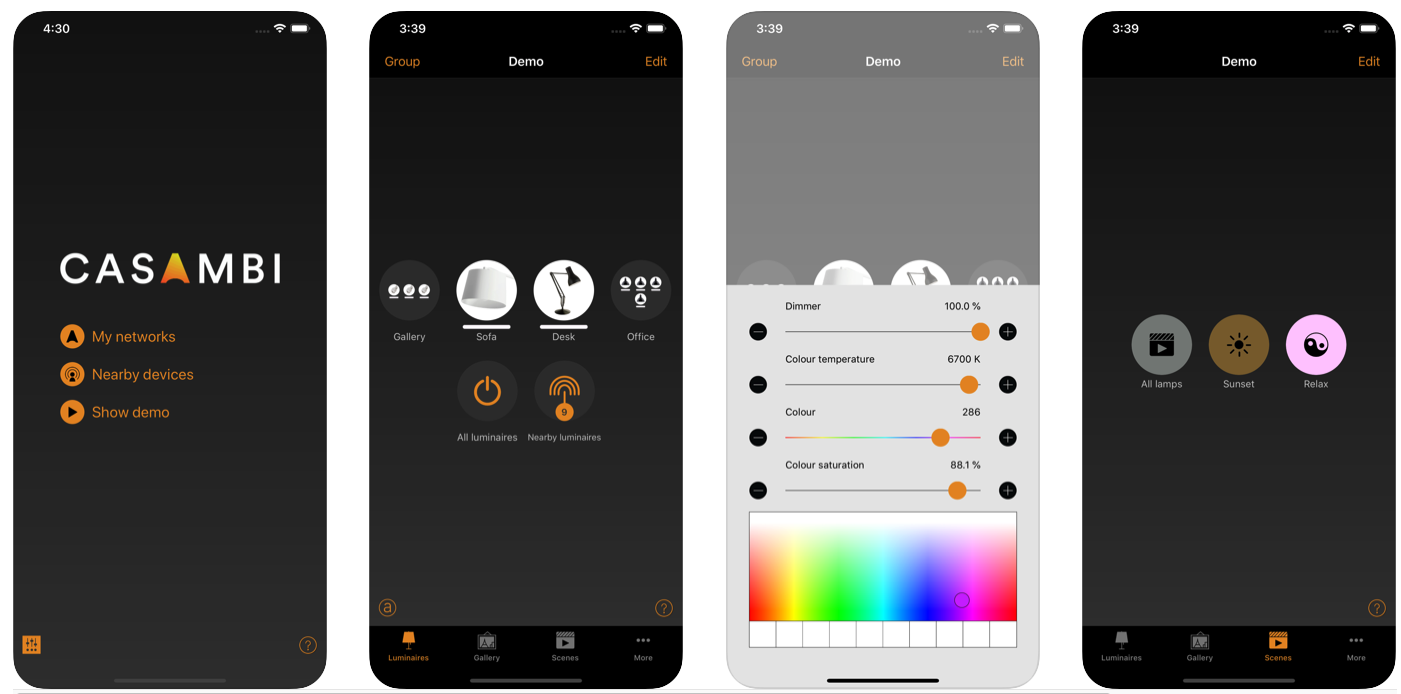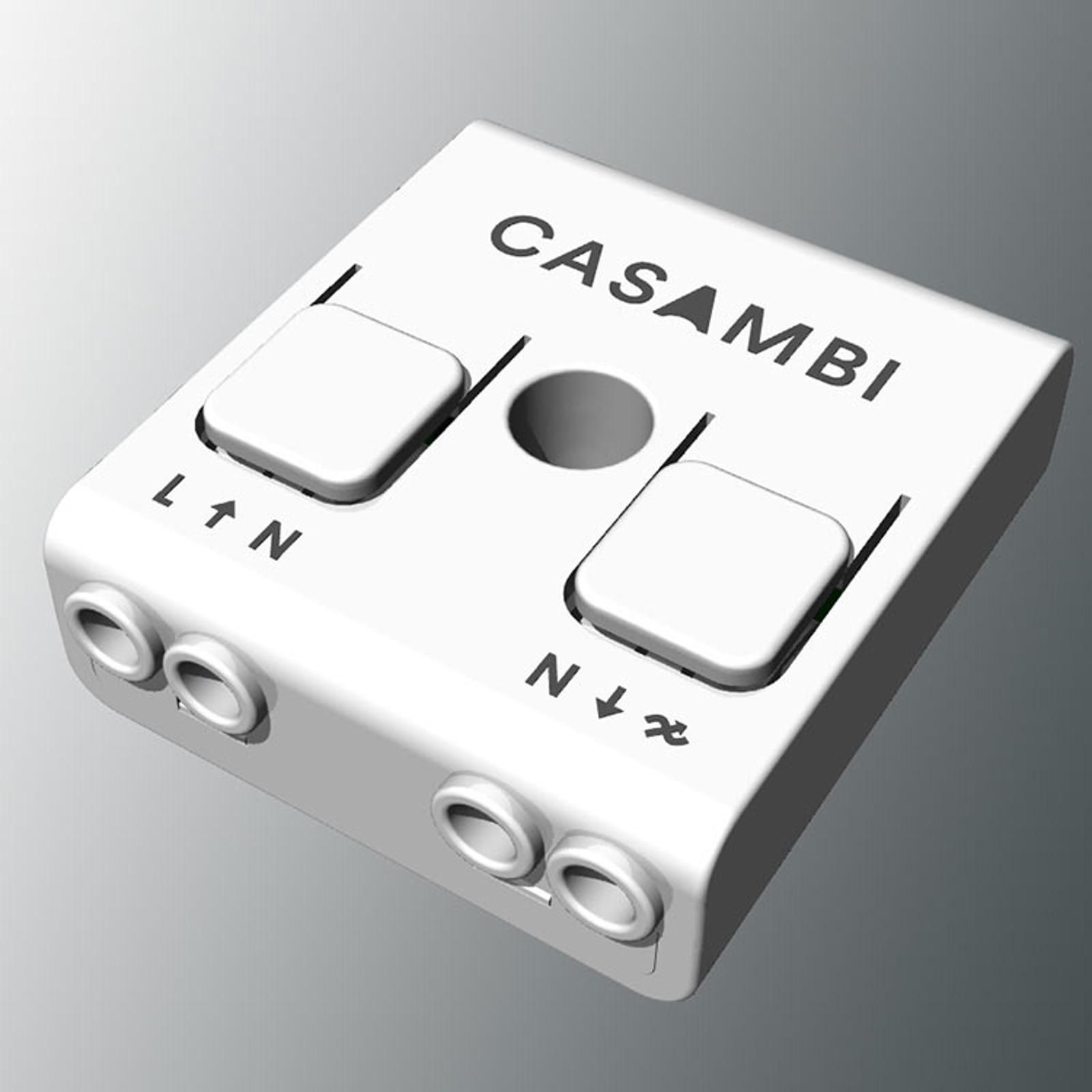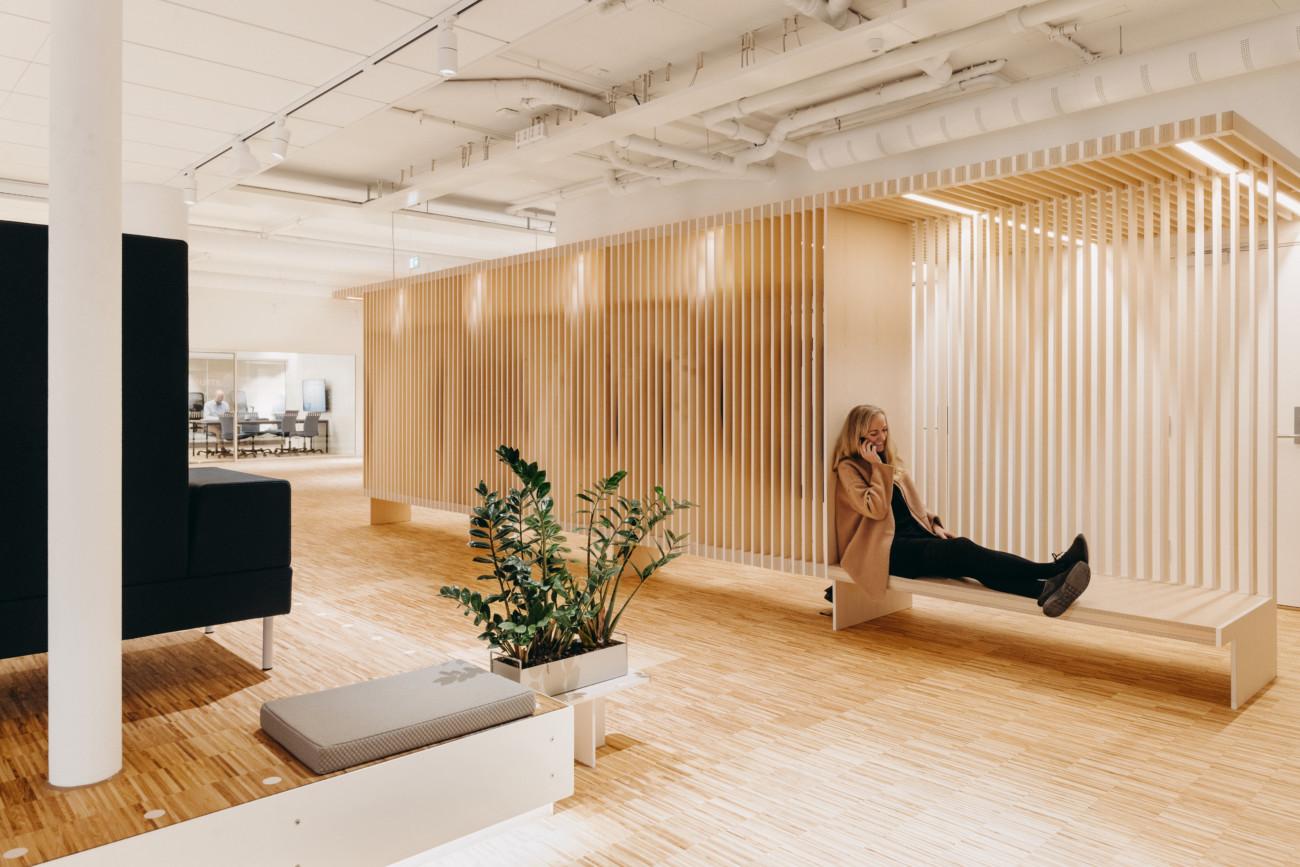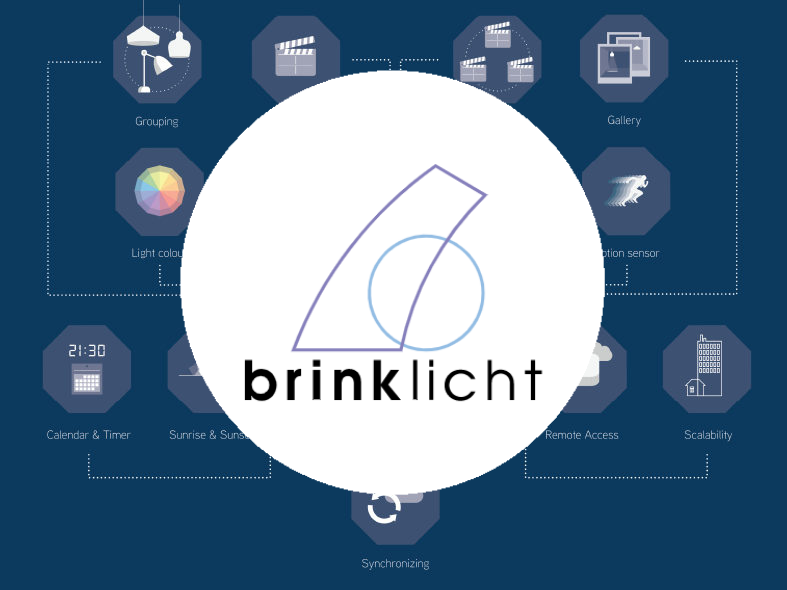Casambi
In 2011 Timo Pakkala and Elena Lehtimäki founded Casambi with the motivation to create a convenient future-proof and safe lighting control solution that utilized smartphones and wireless technology to bring our spaces into a new age.
Automated and smart devices are at the forefront of the digital age. Managing our lives and work from our smartphones has been possible thanks to internet connectivity, WIFI and apps. Self-driving cars are being made to free the driver’s attention to be able to multitask and smart home device connectivity allows homeowners to switch devices on or off and record grocery lists with voice activation. With all of these tech advances in our everyday lives, why are multiple light switches and dimmers still physically being installed and manually operated in new buildings and retrofits?

Casambi has actively been on the path of the adoption and proliferation of wireless digital electronics and lighting across brands and modalities. They now boast thousands of Casambi ready luminaires and close to 300 Casambi ready products. Over the years they have progressively developed an open ecosystem for luminaires, sensors, switches, and other lighting components that is fully customizable and compatible, and above all, smart. Smart, in this case, is not only in the impact their lighting solution has on energy consumption but also in the implementation of their app. With a plethora of smart wireless lighting management systems available there has been a need to streamline and find the most effective solution that is all-encompassing and simple for the end-user.
In the early nineties, DALI (Digital Addressable Lighting Interface) was created and widely adopted as the decentralized lighting system of choice. DALI has established itself as an international standard that requires designers and architects to incorporate the wiring system into the space and should require room for future modifications and additions. A few years prior to DALI, DMX (Digital Multiplexing) was created and is still being used as a choice for centralized systems. Both of these control systems rely on wires for their communication and came about decades before smart devices were conceived. As far as wired solutions go, the initial costs in new developments will be lower initially, but that might not be the case long term. Although wired control systems might be less expensive, the installation of wired solutions entails considerably more labour and materials. When it comes to installation effort, building alterations, downtime, and the desire for future expansion, wireless technology is easier and more advantageous.
With all these control system solutions available in 2021 and the prospect of new ones being developed in the future, deciding between them needs to take into consideration factors such as adaptability of the system, its functionality, customization, if it allows room for expansion, costs, the needs of the client and the environmental impact. The first deliberation when looking at wireless systems is the communication between the chosen device and the lighting network. WIFI or Zigbee networks are popular and inexpensive, but there are a few factors that could negatively affect the client. Network coverage and traffic can interfere with the device's signal and impede communication. The more busy the network becomes the higher the risk of losing lighting control. The even greater risk with a WIFI network is security. Internet hackers can gain access to networks through weak areas like lighting control systems and infiltrate high-value information. Like WiFi, Zigbee also utilizes a centralized point to connect. An advantage of a Zigbee wireless system compared to a WiFi one is that the devices are connected to a central hub as well as to each other device on the network, but an additional WiFi connection is still needed with a system using Zigbee.
Casambi moved towards an answer for wireless needs that enables users to communicate directly with light fittings using Bluetooth Low Energy. Bluetooth is already a standard feature in the vast majority of modern day smart devices including tablets, laptops, smartphones and smartwatches and the software to run the system can be updated with little fuss regardless of the brand or operating system. A good advantage of Bluetooth is that it doesn’t use a centralized connection point. The control device communicates directly with the individual or grouped lighting devices.
Casambi founders, Timo and Elena, both worked at the Nokia Research Center where Bluetooth Low Energy was developed. This is no doubt the reason why Casambi adopted a Bluetooth Low Energy wireless control system model ahead of others in the market. Relying on network communication with Bluetooth eradicates the need to rewire a building as the device can communicate directly with the fittings and the luminaires with each other. This is a very good solution for retrofits as it negates the guesswork in a conventional installation of a wired solution when having to find existing wires to connect to. The process of pulling wires for sensors, switches, controllers and the need for metal conduits being run into walls and floors are all nullified with wireless solutions. Further, routers and gateways as well as manpower, materials, and time needed to do the upgrades are also not needed with Bluetooth Low Energy.
Installation aside, the only required updates that will be needed for a Casambi Bluetooth Low Energy system are for the hardware and software in the system – all the hardware required isn’t integrated as it’s on small chips built into the luminaires, drivers, and switches; and all the software is in the app or in the cloud, which can easily be updated on the device automatically. Casambi products run exactly the same firmware in the same hardware environment which assists in less complications. Firmware updates on the device are also done over the air further future-proofing this type of system. As for the initial set up, the user simply needs to download the Casambi app to their device, specify a Casambi ready system and then they will be able to directly control all their fittings.
One Casambi user, Robert van der Zwart, was quoted saying: ‘The most exciting feature is that if you need the Bluetooth system to do something, then essentially you can build it with zero technical background,’ he further added ‘We have a picture wall where we regularly change artworks. That requires some of the track lights to be changed. This is a simple process using Kreon Esprit spots with integrated Casambi drivers.’
The customization and functionality of smart lighting makes life more efficient and pleasant. Besides switching lighting on and off, dimming, colour adjustment, daylight control, and automation with timers or triggers there are additional, more personal, benefits. Better day and night rhythm, increased productivity, better well-being and energy savings. Triggers that use motion sensors for the presence of persons in the space, sounds, the amount of incoming daylight and time effectively manage the number of luminaires that need to be used, their brightness and for how long.
Casambi has also developed a firmware extension interface to make bidirectional communication possible by sending sensor values and diagnostics through the Casambi network to the cloud and back to initiate an action. Variables that can be picked up by the sensors include the number of people who have passed a certain place, illuminance, humidity levels, carbon dioxide, wind, or even the amount of time that has passed after an occurrence. These sensor values can be read from the app and can be used for any kind of analysis and business purposes. This opens several specific functionality options for businesses and individuals to improve conditions that were previously unimaginable.
Having open ecosystems of optimally integrated and 100% interoperable Casambi ready luminaires, drivers, sensors, and switches from the major industry players increase options for the user. Casambi supports key industry standards and interfaces including DALI, EnOcean, 1-10V, PWM, and phase-cut dimmable devices and light sources can all be used with few complications for a variety of fully scalable needs. Timo has stated that lighting control should be simple and seamless, but it has been held back by outdated standards and inadequate technology and it’s time for a new standard. This standardization is essential while we are in the midst of a revolution in the IoT and lighting management systems. With the ongoing updates Casambi is making, this standardization looks to be possible. Inevitably, the end-user’s experience will be the determining factor of which systems will be taken into the future.



